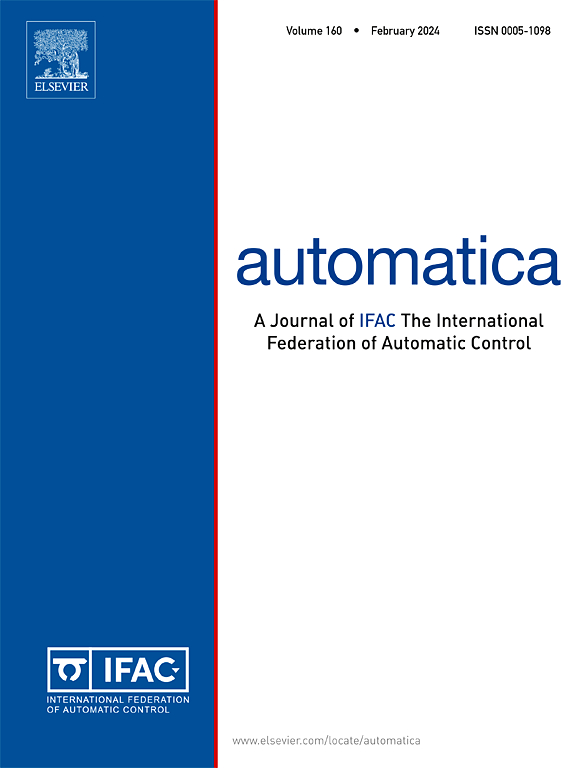区分干扰的非线性迭代学习控制
IF 4.8
2区 计算机科学
Q1 AUTOMATION & CONTROL SYSTEMS
引用次数: 0
摘要
如果迭代学习控制(ILC)中的干扰从一次迭代到下一次迭代都不同,那么这些干扰可能会被放大,而减少这种放大通常会降低收敛速度。本文旨在解决这一权衡问题,实现 ILC 的快速收敛、鲁棒性和较小的收敛误差。本文提出了一种非线性学习方法,利用重复干扰和变化干扰的振幅特性差异来调整学习增益。建立了非线性 ILC 算法的单调收敛性,从而形成了一个系统化的设计程序。所提算法的应用表明收敛速度快、误差小。本文章由计算机程序翻译,如有差异,请以英文原文为准。
Nonlinear iterative learning control for discriminating between disturbances
Disturbances in iterative learning control (ILC) may be amplified if these vary from one iteration to the next, and reducing this amplification typically reduces the convergence speed. The aim of this paper is to resolve this trade-off and achieve fast convergence, robustness and small converged errors in ILC. A nonlinear learning approach is presented that uses the difference in amplitude characteristics of repeating and varying disturbances to adapt the learning gain. Monotonic convergence of the nonlinear ILC algorithm is established, resulting in a systematic design procedure. Application of the proposed algorithm demonstrates both fast convergence and small errors.
求助全文
通过发布文献求助,成功后即可免费获取论文全文。
去求助
来源期刊

Automatica
工程技术-工程:电子与电气
CiteScore
10.70
自引率
7.80%
发文量
617
审稿时长
5 months
期刊介绍:
Automatica is a leading archival publication in the field of systems and control. The field encompasses today a broad set of areas and topics, and is thriving not only within itself but also in terms of its impact on other fields, such as communications, computers, biology, energy and economics. Since its inception in 1963, Automatica has kept abreast with the evolution of the field over the years, and has emerged as a leading publication driving the trends in the field.
After being founded in 1963, Automatica became a journal of the International Federation of Automatic Control (IFAC) in 1969. It features a characteristic blend of theoretical and applied papers of archival, lasting value, reporting cutting edge research results by authors across the globe. It features articles in distinct categories, including regular, brief and survey papers, technical communiqués, correspondence items, as well as reviews on published books of interest to the readership. It occasionally publishes special issues on emerging new topics or established mature topics of interest to a broad audience.
Automatica solicits original high-quality contributions in all the categories listed above, and in all areas of systems and control interpreted in a broad sense and evolving constantly. They may be submitted directly to a subject editor or to the Editor-in-Chief if not sure about the subject area. Editorial procedures in place assure careful, fair, and prompt handling of all submitted articles. Accepted papers appear in the journal in the shortest time feasible given production time constraints.
 求助内容:
求助内容: 应助结果提醒方式:
应助结果提醒方式:


